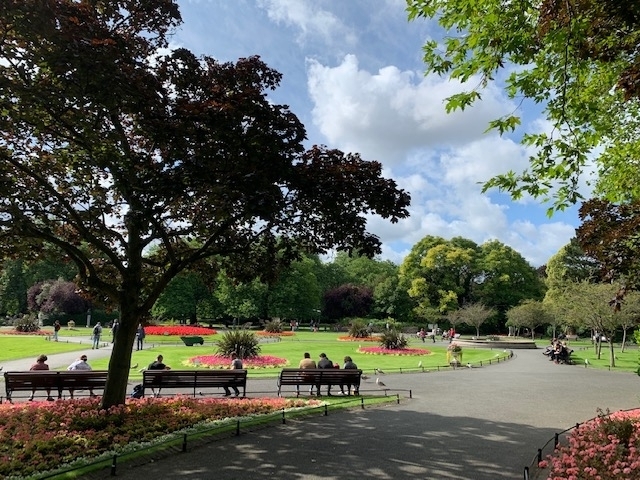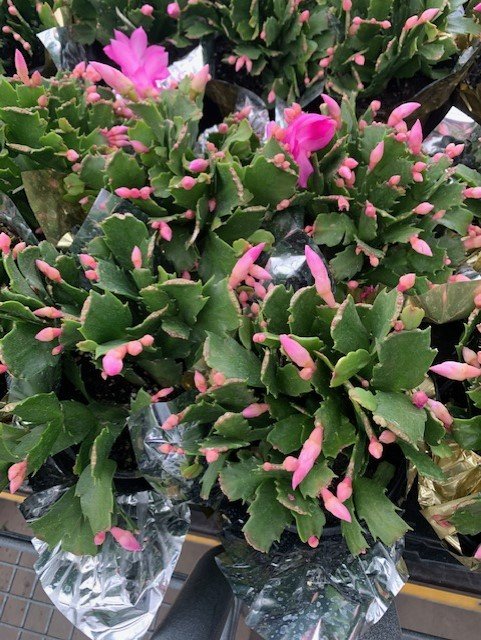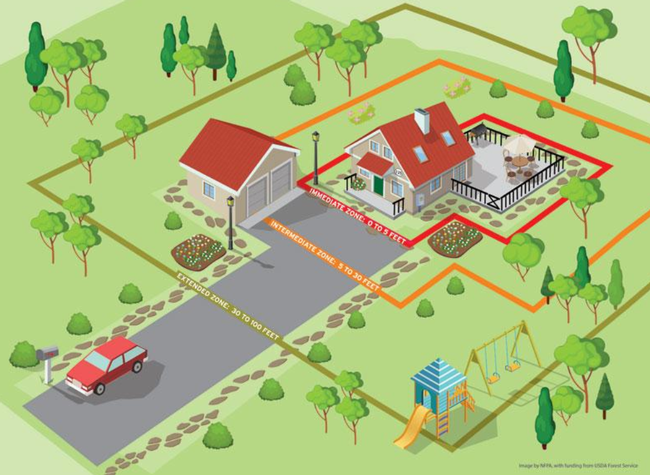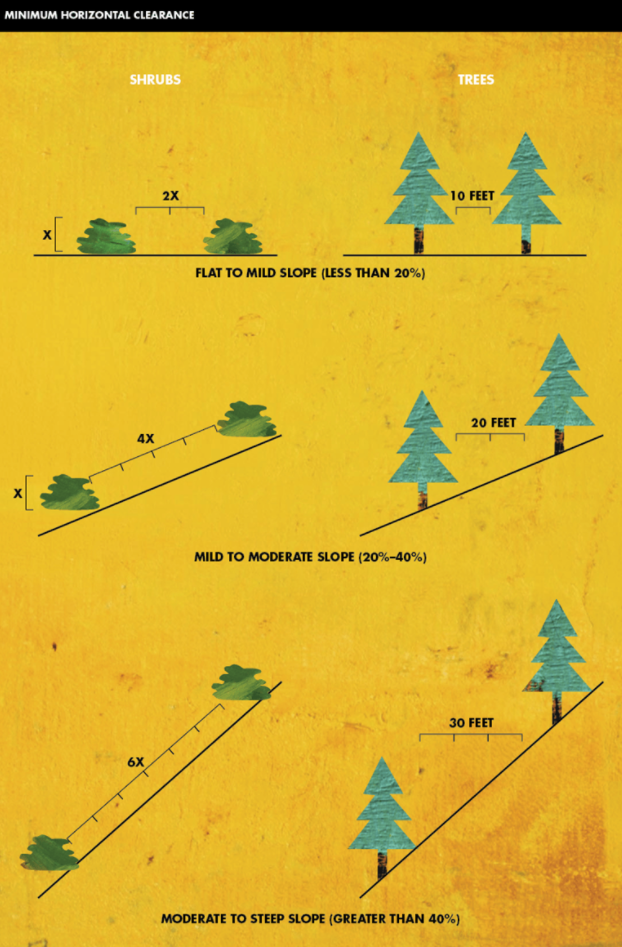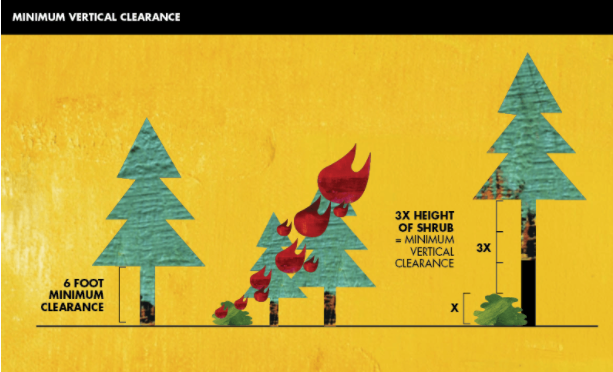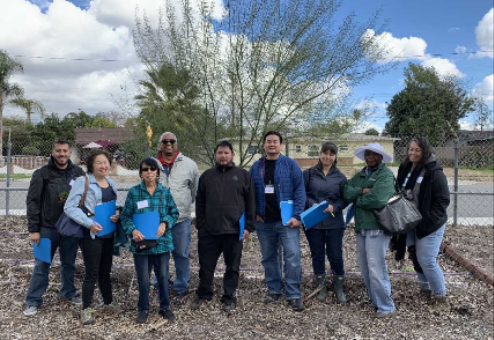Posts Tagged: uc cooperative extension
'Trees for Tomorrow Start Today' Workshop (via Zoom) March 9, 2021 (8:15 AM - 3:00 PM)
Landscape trees provide shade, cool urban heat islands, reduce interior energy use and related costs, provide habitat for pollinators and wildlife, and beautify our communities. They also help clean our environment by absorbing carbon dioxide emitted by vehicles and other producers of fossil fuels.
Taking care of our urban trees is an important way to maximize these benefits. Unfortunately, their average lifespan in our cities is less than 1/4 of their potential due to poor selection and care. You can help enact change and increase the health, longevity and canopy coverage of our urban forests by encouraging your city leaders, local non-profit organizations interested in ‘green cities' arborists, landscape architects, nursery growers, HOAs, and concerned citizens to register for our free ‘Trees for Tomorrow Start Today' workshop (via Zoom) on Tuesday, March 9, 2021 (8:15am – 3pm).
Please reach out to your city leaders and local ‘green industry' professionals to encourage their attendance and participation. While the workshop is free, registration is required through this secure link: http://ucanr.edu/u.cfm?id=264
A bevy of speakers including certified arborists, horticulturists, planners, water district personnel and other non-profit and green industry representatives will discuss the benefits of urban trees; recommended practices for their selection and care; how to avoid hazardous trees that damage property and structures; and share success stories resulting from partnerships through cities, non-profit organizations, the green industry, HOAs, and street tree committees.
A highlight of the workshop will be the opportunity for attendees to participate in breakout sessions that cut across professions and interest groups (city planners, community service directors, arborists, landscape architects, landscapers, water district managers, HOA managers, golf course superintendents, nursery growers, UC master gardeners, concerned citizens, etc.) to enact positive change regarding tree selection and care.
Thank you for sharing this opportunity to help ensure a healthy future for our children's children with your city leaders and decision-makers.
In the meantime, here are some tree care tips to ‘start the conversation' between now and the workshop:
• Select trees that perform well in your climate. The Sunset Western Climate Zone maps are more precise than USDA zones for our warmer climates. Trees should also be selected based on their adaptation to the ‘micro-climate' in each particular landscape, as well (shade, proximity to buildings, space needs below as well as above ground, soil type, water source, etc.)
• Plant trees the same depth they were in their container in holes at least 2-1/2 times wider. Do not add compost or organic matter to the hole. This practice can result in circled roots that never grow laterally out of the confines of the dug hole.
• Remove any tree ties that are cutting into the trunk or branches of your trees. If trees must be staked due to windy conditions, make sure that the ties are loose enough to allow trees to gently flex in the wind. This helps trees develop the necessary lower trunk strength and stability to support the tree as it matures. Over time, you may be able to completely remove the ties and stakes once the lower trunk becomes stronger and self-supporting.
• Keep all plants and mulch several inches away from tree trunks.
• Keep tree trunks dry. They should not come into contact with water from sprinklers or hoses.
• Regularly water newly planted trees but water mature trees infrequently and deeply. Watering too often reduces the level of oxygen in the rootzone and can lead to waterlogged soils prone to crown and root rots. During fall, trees require only about 15% of the water they require in the summer.
• Prune trees only as needed and avoid topping them. Invest in the services of a credentialed and knowledgeable professional to correctly care for your valued trees. Find a list of International Society of Arboriculture Certified Arborists in your area here: https://www.treesaregood.org/findanarborist.
Thanksgiving or Christmas cactus? Are they the same species?
With only a few short weeks between Thanksgiving and Christmas and two very similarly looking plants, you may be wondering whether the gift a loved one gave you for Christmas is a Thanksgiving cactus or a Christmas cactus. (Many sold in local nurseries and large box stores this past Christmas season were actually Thanksgiving cactus (S. truncata), pictured below). While both are native to tropical regions of Brazil, host a wide array of flowers ranging from the more traditional pink hues to newer hybrids showing off white, red, yellow, and purple, they have different bloom periods. The Christmas cactus (Schlumbergera bridgesii), blooms about a month after the Thanksgiving cactus.
The Christmas cactus also has slightly different projections on its leaves, which are more scalloped and less pointed that the projections on the Thanksgiving cactus. Is yours still not in flower and not in the holiday spirit? Both species require cool temperatures and longer nights for about a month in advance of their flowering period. Both plants bloom optimally when grown outdoors when cool night temperatures dip`into the 50s and shorter nights reduce daytime light to 10 -12 hours in a 24 hour cycle. They can also be grown indoors in pots if kept in a cool dark area with no light between 5 pm and 8 am. During daytime, they prefer bright, indirect light. Full sun can cause the leaf segments to turn dark red. Both species require good drainage but, even though they are in the cactus family don't let this fool you! They need adequate moisture - particularly during boom- and cannot make it through long, dry periods without supplemental water. Unlike most houseplants, they prefer to feel snug in their pots, almost to the point of enjoying being slightly pot-bound.
Happiest of holidays however you choose to safely celebrate them this year!
Janet
Tips for Enhancing the Fire-Resistance of Your Home Landscape
Welcome to another “New Normal!” Due to climate change resulting in hotter, drier conditions and reduced snowpack, the occurrence of a “fire season” which traditionally occurred from May through October is becoming a misnomer, with fire occurring throughout the year. The severity of what may lie ahead over the next several months was highlighted in a recent tweet posted by CAL FIRE: “Compared to last year, California has seen over 2,650 more fires and a nearly 2000% increase in the acres burned year-to-date (January 1 – September 7), across all jurisdictions.”
Indeed, Fall often hosts strong offshore winds that can quickly spread destructive fires, exacerbated by the impacts of climate change. What can you do to help ensure ‘defensible space' that increases the safety of your family, pets and property in fire-prone areas? First and foremost, select and properly maintain fire-resistant plants augmented with hardscapes and fire breaks extending from your home to at least one hundred feet outward. (This also helps ensure access to your home by firefighters and other first-line responders in the event of a fire or other life-threatening event.)
Vegetation chosen for your defensible space should have low flammability and can include trees and shrubs along with herbaceous plants. Allowing adequate space between woody plants is important to avoid a continuous fuel path (fuel ladder) where fire starting at ground level can climb to the top of a tree and spread from tree to tree.
1. Follow these ‘defensible space' guidelines to reduce the risk of fire spread and damage:
Zone 0 (first 5 feet from structures): avoid anything combustible including woody plants, mulch, woodpiles, trellises, and stacked items. Instead, add walkways and mulch and other hardscaping made from pebbles and rocks, pavers, rock mulch, or pea gravel. Include a 6-inch noncombustible area extending from the ground to the exterior siding of structures.
Zone 1 (5-30 feet from structures): Eliminate fire spread by ensuring adequate space between trees, removing lower branches. Consider adding irrigated groundcovers or mowed grass or hardscapes between these plant groupings, as well. Properly maintain plants and remove dead portions of plants.
Zone 2 (31-100+ feet from structure to the property line): Concentrate on reducing the density of plants to slow the spread of fire and to reduce the height of flames. Woody plants should be spaced (as illustrated below) to prevent fuel ladders.
Defensible Zones (source: National Fire Protection Association, nfpa.org)
2. Remember that even a so called “fire-resistant” species that is under-watered or otherwise poorly cared for can be highly combustible. The conditions under which the plant is grown influences its fire-resistance more than the species itself. However, plant species high in wax, oil, and resins such as conifers tend to be highly flammable while manzanita and ceanothus (California lilac) are less so.
3. Avoid planting or spreading invasive species. While invasive plants are never recommended in any landscape, they are especially problematic in natural areas prone to wildfire. Once established they can fuel fire as well as crowd out native vegetation and associated habitat. Refer to the California Invasive Plant Council website for more information and specific examples and plants to avoid (www.cal-ipc.org).
4. Follow recommended planting and pruning guidelines to prevent both horizontal and vertical spread from tree to tree. Horizontal spacing is directly related to the slope of the land and the height of the vegetation.
Photo above (courtesy of CAL FIRE) is a diagram to help you determine minimum horizontal clearance for tree and shrub placement to reduce fire risk.
Photo above (courtesy of CAL FIRE) shows a 5' shrub near a tree. In this example, 15' of clearance (3 x 5') is needed between the top of the shrub and the lowest tree branch to prevent a fire ladder.
5. While fire-resistant natives and adapted non-natives greatly reduce your chance of losing your home and property to wildfire, all plants will burn under favorable conditions. Ensure that plants receive adequate irrigation.
6. Rather than applying organic mulch near your home, use non-flammable materials such as stone and pebbles. Granite pathways are also suggested since they provide a fuel break. Firewood and propane tanks should also be kept away from your home.
References:
CAL FIRE “Ready for Wildfire”: https://www.readyforwildfire.org/prepare-for-wildfire/get-ready/defensible-space/
Drill, S. et al. (2009), S.A.F.E Landscapes: Southern California Guidebook, UC Cooperative Extension: https://ucanr.edu/sites/SAFELandscapes/files/93415.pdf
UC ANR “Preparing Home Landscaping for Fire”: https://ucanr.edu/sites/fire/Prepare/Landscaping/
UCCE Master Gardeners Participate in Research to Identify Trees That Withstand Climate Change
Nine UC Master Gardeners in San Bernardino County, the Chino Basin Water Conservation District (CBWCD), Inland Empire Resource Conservation District and Mountain States Wholesale Nursery are collaborating with UC Cooperative Extension Environmental Horticulture Advisor and Prinicpal Investigator Janet Hartin on a 'climate-ready landscape trees' study to determine the impacts of mulch on tree growth and health. The project is located at CBWCD in Montclair and includes four species of landscape trees from a larger study at UC Riverside consisting of 12 species without a mulch/no mulch comparison. Species included in the mulch trial are: Parkinsonia x Desert Museum (Desert Museum Palo Verde), Prosopis glandulosa 'Maverick' (Maverick Mesquite), Chilopsis lineris 'Bubba' (Desert Willow) and Pistacia 'Red Push' (Red Push Pistache). Trees were planted in late 2016 and received adequate irrigation for one year to assure adequate early growth. Irrigation was tapered off in 2017 and trees now receive no supplemental irrigation. The first round of results will be reported in July, 2019 by Janet at the annual American Society for Horticultural Science 'Climate Change in Urban Landscapes' session co-chaired by fellow UCCE Advisor Igor Lacan, former UC Davis Postdoctoral Researcher Lloyd Nackley (currently a Plant Physiologist/Nursery Specialist at Oregon State University) and Janet. Thank you to all of our partners!
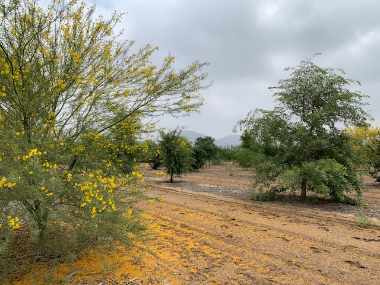
EditedImage (23)





